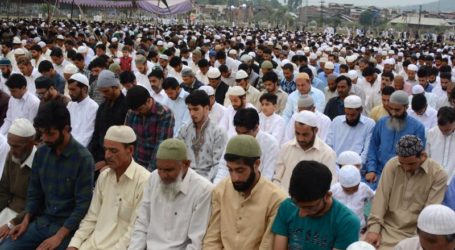New MABIMS Criteria Influences the Determination of Beginning of Hijri Month in Indonesia

Jakarta, MINA – The implementation of the new criteria for MABIMS has an impact on changes in the calculation and determination of the beginning of the Hijriah month.
At the Media Lounge Discussion (MELODI) held by BRIN on Friday, at the BJ Building. Habibie Jakarta, Head of Sub-Directorate for Hisab Rukyat and Sharia Development at the Ministry of the Republic of Indonesia, Ismail Fahmi, explained that so far, the criteria for the hilal (month) at the beginning of the Hijriah are a height of 2 degrees, an elongation of 3 degrees, and an age of the moon of 8 hours.
However, he continued, based on the results of the agreement between the Ministers of Religion of Brunei, Indonesia, Malaysia and Singapore (MABIMS), in 2021 the criteria for the crescent moon will change to a height of 3 degrees and an elongation of 6.4 degrees.
“This agreement was marked by the signing of a joint letter ad referendum in 2021 regarding the use of the new MABIMS criteria in Indonesia starting in 2022. The change in these criteria will affect the determination of the start of the Hijriah month. “Especially in Indonesia, which uses the reckoning and rukyat methods,” said Ismail.
Meanwhile, Principal Expert Researcher at the Astronomical Research Center, Prof. Thomas Djamaludin, said that rukyat (observation) and hisab (calculation) are considered astronomically equivalent in determining the start of the Hijri month. So, there is no dichotomy between rukyat and reckoning.
“The rukyat hilal method was implemented on the 29th Hijriah to carry out the example of the Prophet (ta’abudi). In order for the rukyat to be accurate, the direction is assisted by the results of the calculation. Hisab can be used to create a calendar for a long time in the future. “In order for reckoning to also refer to the example of the Prophet, the criteria are made in accordance with long-term rukyat results, in the form of data on the visibility of the hilal or imkan rukyat (the possibility of being able to do rukyat),” explained Thomas.
According to him, the application of rukyat and reckoning can be united with the criteria for visibility of the hilal or imkan rukyat.
Thomas is of the opinion that there are differences in the beginning of the Hijriah months such as Ramadan, Shawwal and Zulhijah, not because of differences between the methods of reckoning and rukyat, but because of differences in the criteria for the new moon.
He explained that the criteria were the basis for creating a reckoning-based calendar that could be used in rukyat forecasts. The criteria must also seek a meeting point for rukyat practitioners and hisab practitioners, to become a mutual agreement, including MABIMS.
In addition, the discourse on hisab-rukyat in the Islamic world has seen a paradigm shift. Previously it only focused on the postulates of rukyat reckoning and their interpretations, but now it has shifted towards discussing global calendar unification. (T/RE1/P2)
Mi’raj News Agency (MINA)






